Wetlands are key habitats that provide a variety of ecological benefits including flood control and erosion mitigation, filtering water, and providing habitat to an array of wildlife like birds, fish, and frogs. In October 2021, the Coastal San Luis Resource Conservation District (CSLRCD) completed a wetland restoration project on an 80-acre wetland property at the confluence of Los Osos Creek and Warden Creek. Projects like this play an essential role in improving modified or degraded habitats and often have many interconnected benefits for the surrounding landscape.
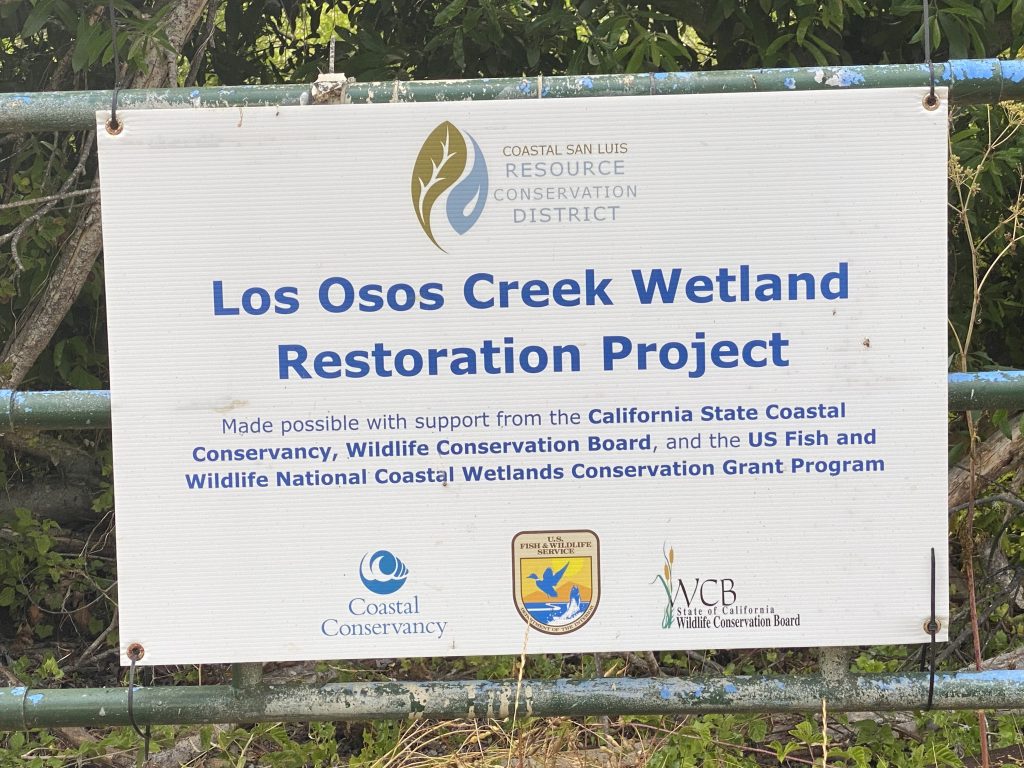
Why restore wetlands?
Wetlands and floodplains act as pre-filters, spreading and slowing stream flows, which allows sediment loads and pollutants from upstream sources to drop out before flows enter the estuary. One of the primary threats facing wetlands is channel modification, which can disconnect the wetland from the surrounding area called a floodplain. With this project, the floodplain prevents those pollutants from reaching Morro Bay, which is less than a mile downstream.
Wetlands also play an essential role in removing carbon dioxide from our atmosphere in a process called carbon sequestration that helps to minimize impacts from climate change. Wet fertile soils like those found in wetlands have higher microbial activity and organic material, which support dense perennial vegetation that captures atmospheric carbon dioxide through photosynthesis.
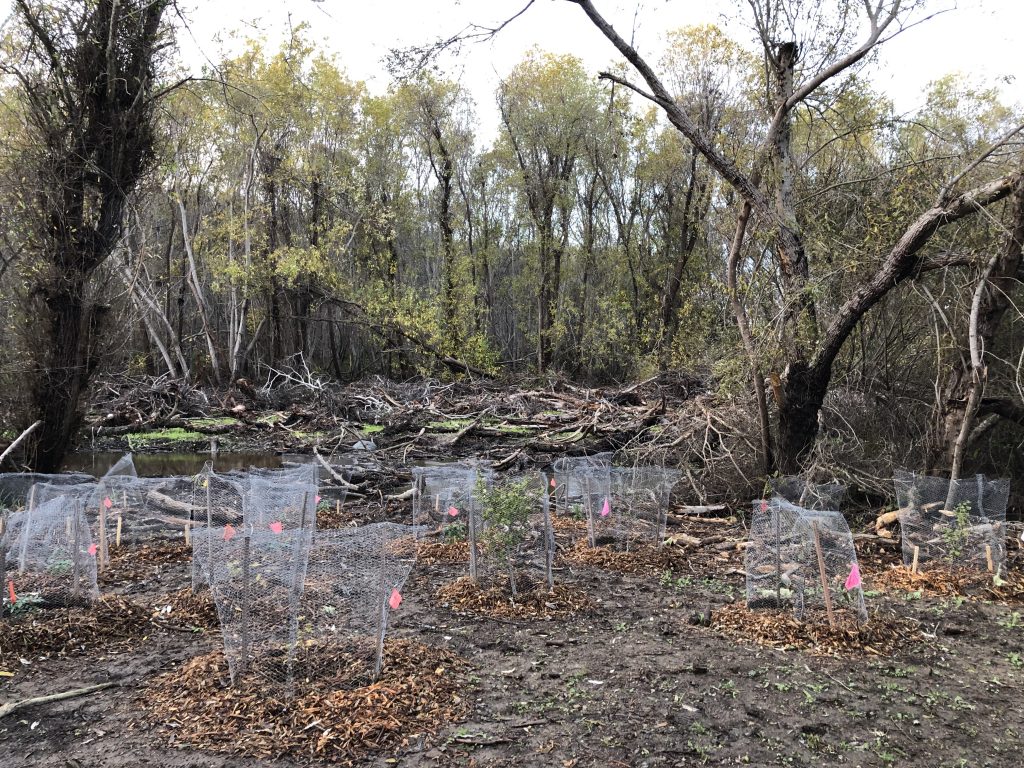
The purpose of the Los Osos Wetland restoration project was to improve water quality in the estuary and increase carbon sequestration by reconnecting Los Osos Creek and Warden Creek to their historic floodplain and restoring habitat for wildlife by removing barriers for migrating fish, managing invasive species, and restoring native plants.
Wetland project development
The implementation of the Los Osos Wetland restoration project was no small endeavor for the CSLRCD, who initially worked with the previous landowner and the Natural Resources Conservation Service (NRCS) to put the land under a conservation easement in 1998, ensuring the land would never be developed. In 2015, CSLRCD acquired the land with funding from US Fish and Wildlife Service and California State Coastal Conservancy to permanently protect it. Following the acquisition, staff worked with hydrologists, restoration specialists, and engineers to develop a comprehensive restoration plan and design. A preferred design for the restoration was selected, and in 2020 staff began securing the necessary project permits with funding from the Wildlife Conservation Board, US Fish and Wildlife Service, and California State Coastal Conservancy.
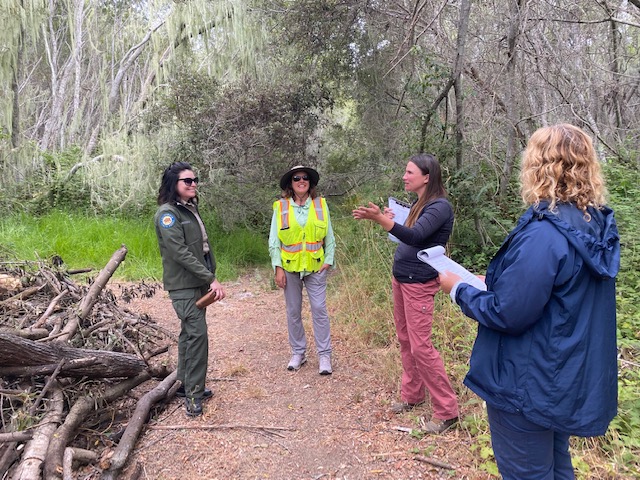
Project construction
After more than six years of planning, the project broke ground in September 2021. Construction occurred primarily along the floodplain of Warden Creek, which joins up with Los Osos Creek before passing under the South Bay Boulevard bridge and emptying into the estuary.
The effort included breaching 400 feet of an earthen levee that separates Warden Creek from its floodplain and removing three perched culverts that act as a barrier to fish passage. The barrier was replaced with a seasonal low flow crossing, which allows for fish migration. Then the channel was replanted with native vegetation to prevent erosion and create roughness.
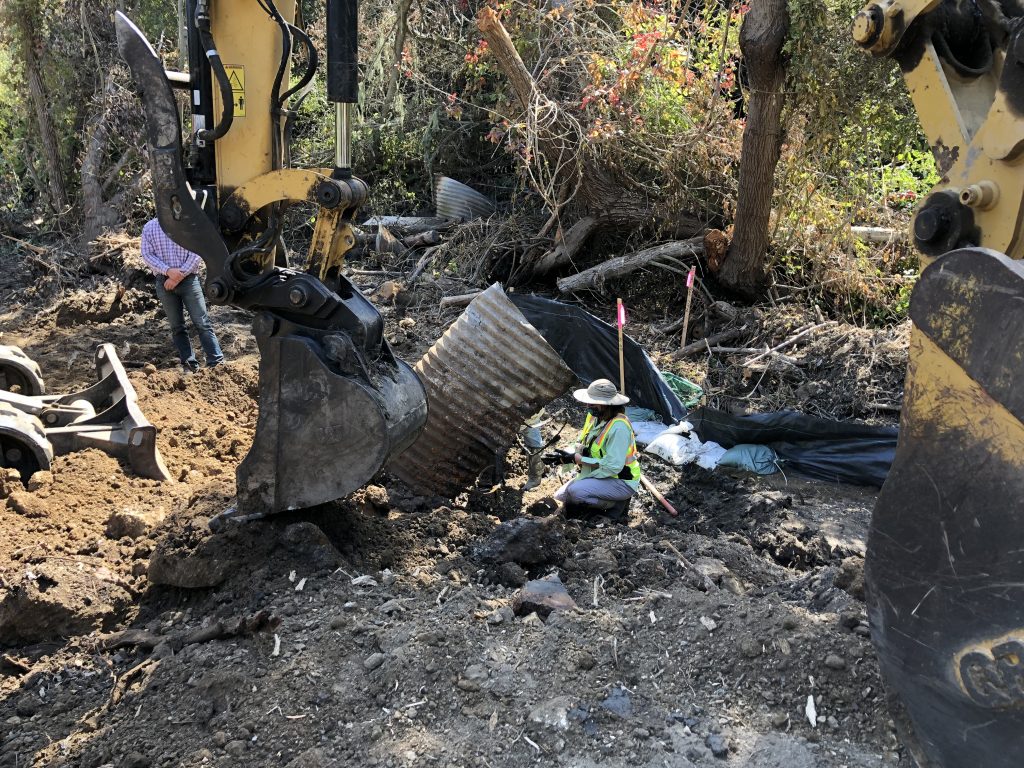
The construction also included decommissioning an access road, demolishing existing upland infrastructure, and restoring an acre of upland coastal chaparral habitat with native species, including Morro manzanita, California sagebrush, and coyote brush. This work was completed by Molnar Construction of Cayucos with support from the California Conservation Corps.
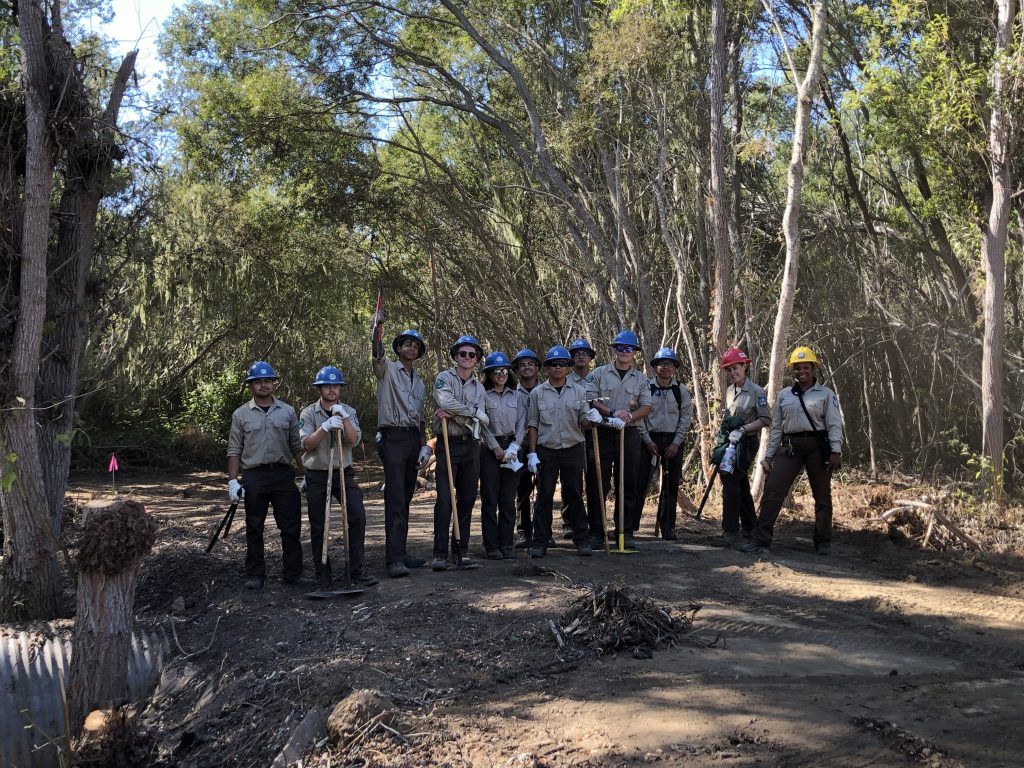
The completed project successfully restored two floodplains, removed 400 feet of levees, and reconnected 40 acres of habitat. The project also restored a one-acre upland area with coastal dune scrub species and removed invasive species like iceplant and Cape ivy.
Wetland benefits for sensitive species and wildlife
Wetlands provide critical habitat for fish, frogs, and other wildlife. An important aspect of the Los Osos Wetland restoration project was to enhance habitat for sensitive species like Central Coast steelhead (O. mykiss), California red-legged frog (R. draytonii), Morro shoulderband snail (H. walkeriana), tidewater goby (E. newberryi), and Least Bell’s vireo (V. bellii pusillus). A diverse team of local and federal biologists monitored for these sensitive species to protect them during construction.
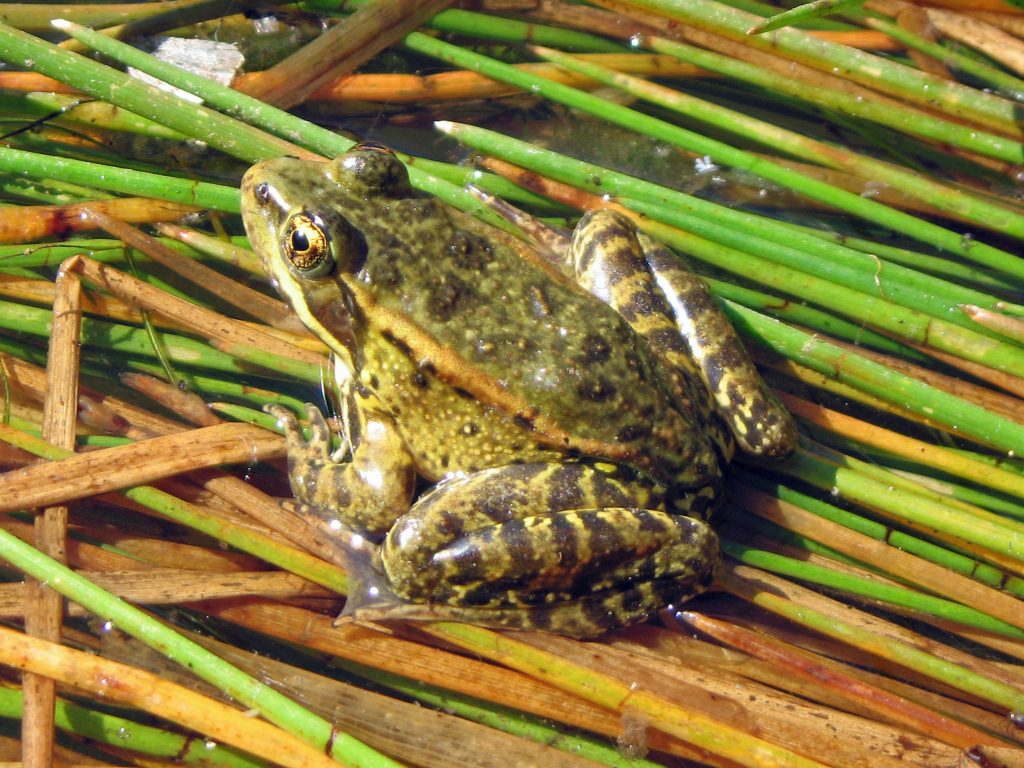
Wildlife sightings
The Estuary Program lent the CSLRCD a number of game cameras during construction. The cameras caught a few shots of deer, bobcats, and mountain lions making their way through the project site. Additional wildlife sightings included a variety of birds and over 60 California red-legged frogs.
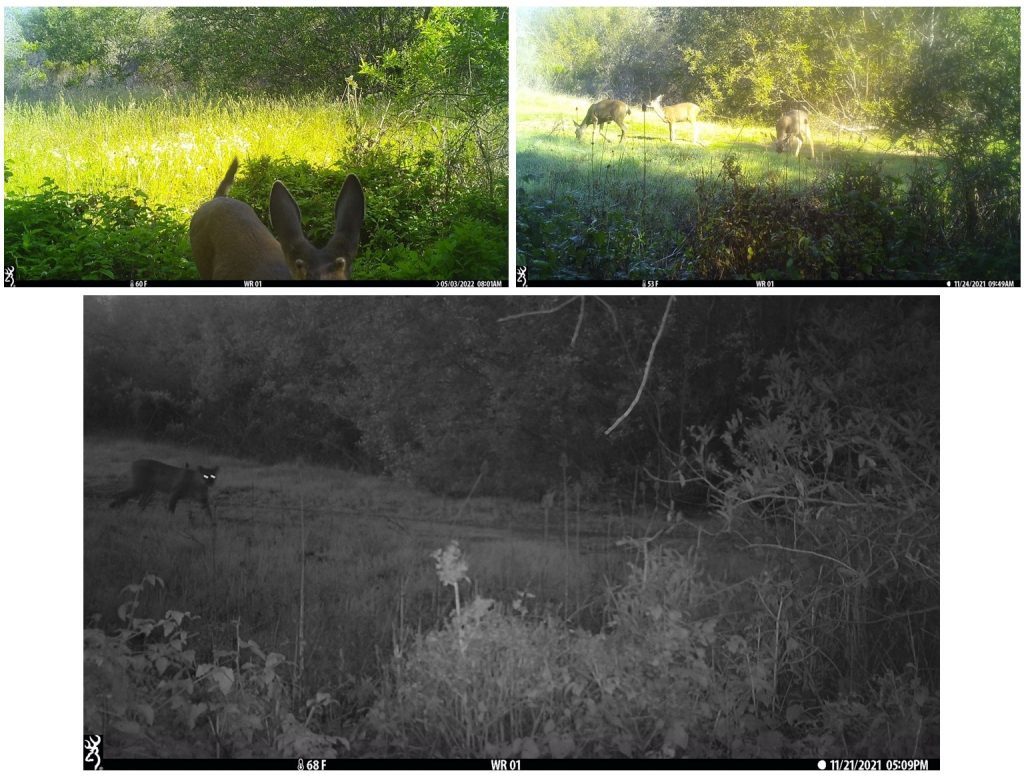
Next steps
The completed Los Osos Wetland restoration project is at an exciting milestone. Post-construction plans include water quality monitoring and additional native species plantings, including manzanita, sagebrush, coyote brush, buckwheat, and yarrow. These additional steps will further improve the function of this important habitat.
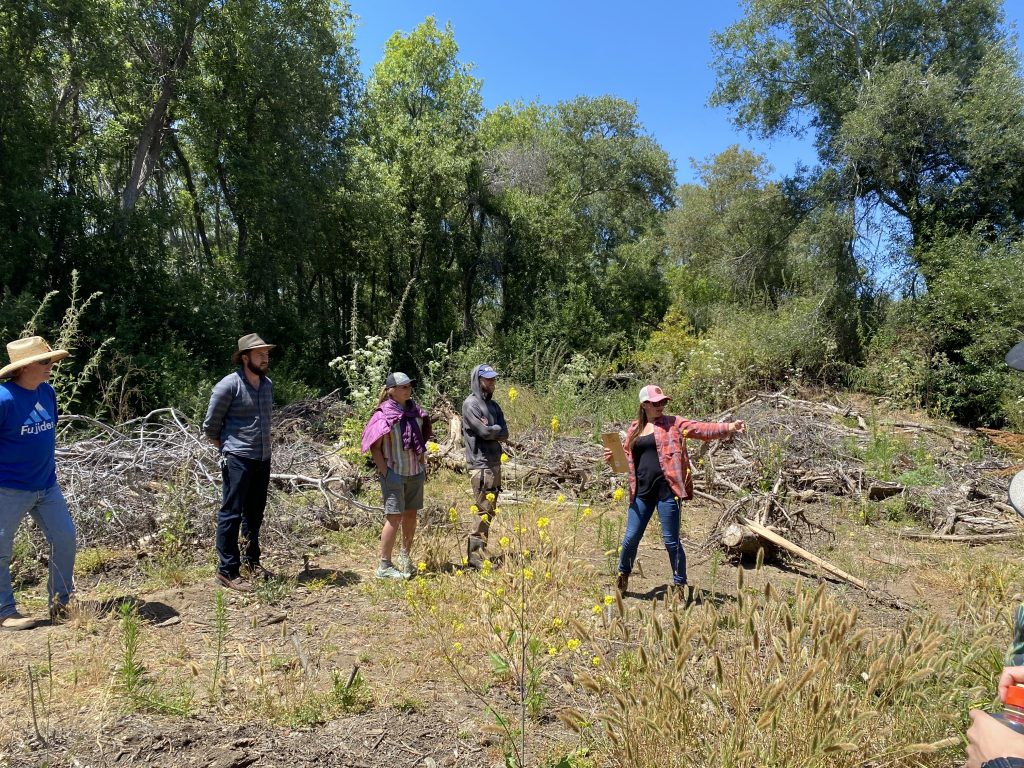
For more information about this project, you can visit the CSLRCD’s project webpage here.
Help us protect and restore the Morro Bay estuary!
- Donate to the Estuary Program today and support our work in the field, the lab, and beyond.
The Estuary Program is a 501(c)3 nonprofit. We depend on funding from grants and generous donors to continue our work. - Support us by purchasing estuary-themed gear from ESTERO. This locally owned and operated company donates 20% of proceeds from its Estuary clothing line and 100% of Estuary decal proceeds to the Estuary Program. Thank you, ESTERO!
- Purchase items from the Estuary Program’s store on Zazzle. Zazzle prints and ships your items, and the Estuary Program receives 10% of the proceeds.
Thank you for helping our beautiful, bountiful, biodiverse bay!